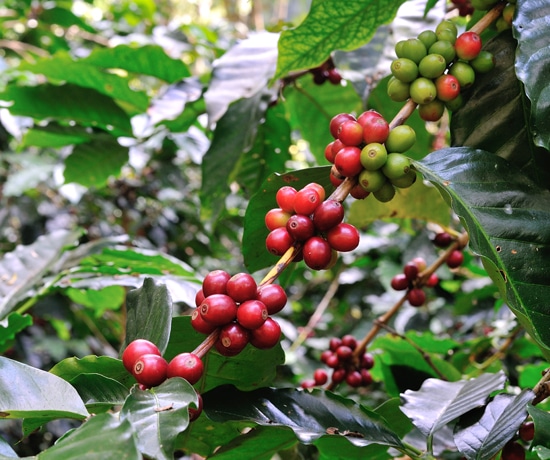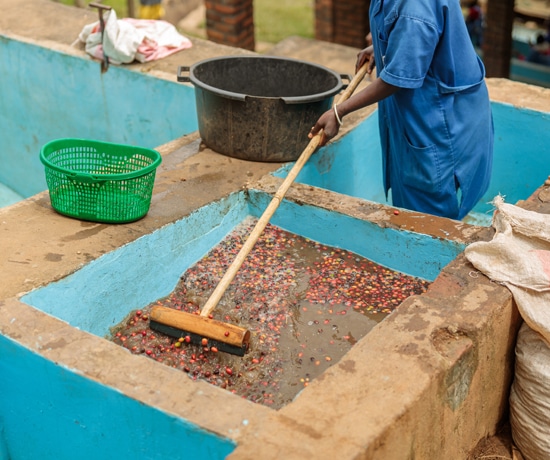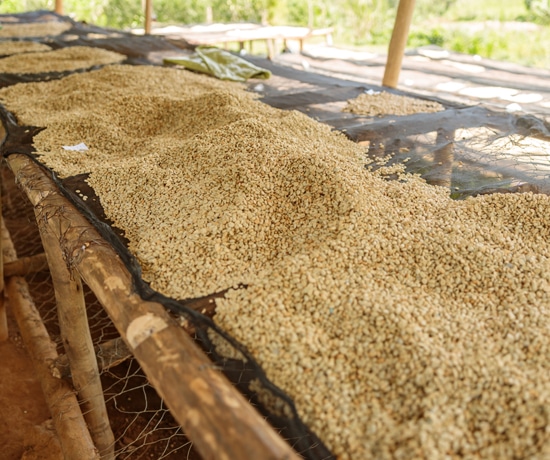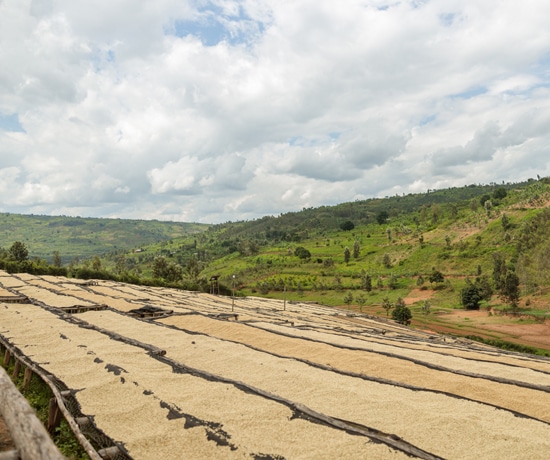Washed processing
Washed or wet-processed. These are the common names you can meet on our e-shop or in a café as well. Regarding the name, you’d probably guess that water plays an important role in this process, but why? What is the whole technique?
You can see water being used in the very beginning, right after the harvest. Coffee cherries are placed into a container filled with water. This is called floating, and it’s very easy how to separate unripe and overripe cherries, together with damaged ones and dirt, from the ripe ones. Ripe cherries are heavier, because of the higher density, so they sink, however the other cherries and dirt float. Sieves are used to remove floating material and only ripe cherries continue into the process.
After floating, cherries are de-pulped by using pulping machines. However, after pulping there is still some of the fruit (mucilage) left on the bean, which is unwanted in the washed processing. This is why the fermentation stage is placed. Using fermentation makes sugars from the pulp easily soluble, thanks to enzymatic reactions, so after no more than 48 hours we are able to remove all of the leftover fruit from the bean. The leftover fermented mucilage is washed and the bean is ready to be dried.
Drying can take place on concrete patios or on raised African beds. Mechanical drying is also a possibility. On patios, the beans need to be turned several times a day to be dried evenly. Even drying is crucial to prevent the bean before fungus or bacterial damage.
Raised African beds are usually wooden constructions with textiles or other materials. The big advantage of the raised African beds is the flowing air also underneath the beans, which makes drying more even.
After drying, which takes usually several weeks, based on the climate and weather, the parchment (last cover of coffee bean) is removed, this process is called hulling.
Green beans with a humidity of 10-12 % are then prepared for export.
In terms of flavour, washed coffees are usually very clean, with medium or higher acidity. Common flavour notes are stone fruit flowers and chocolate.




